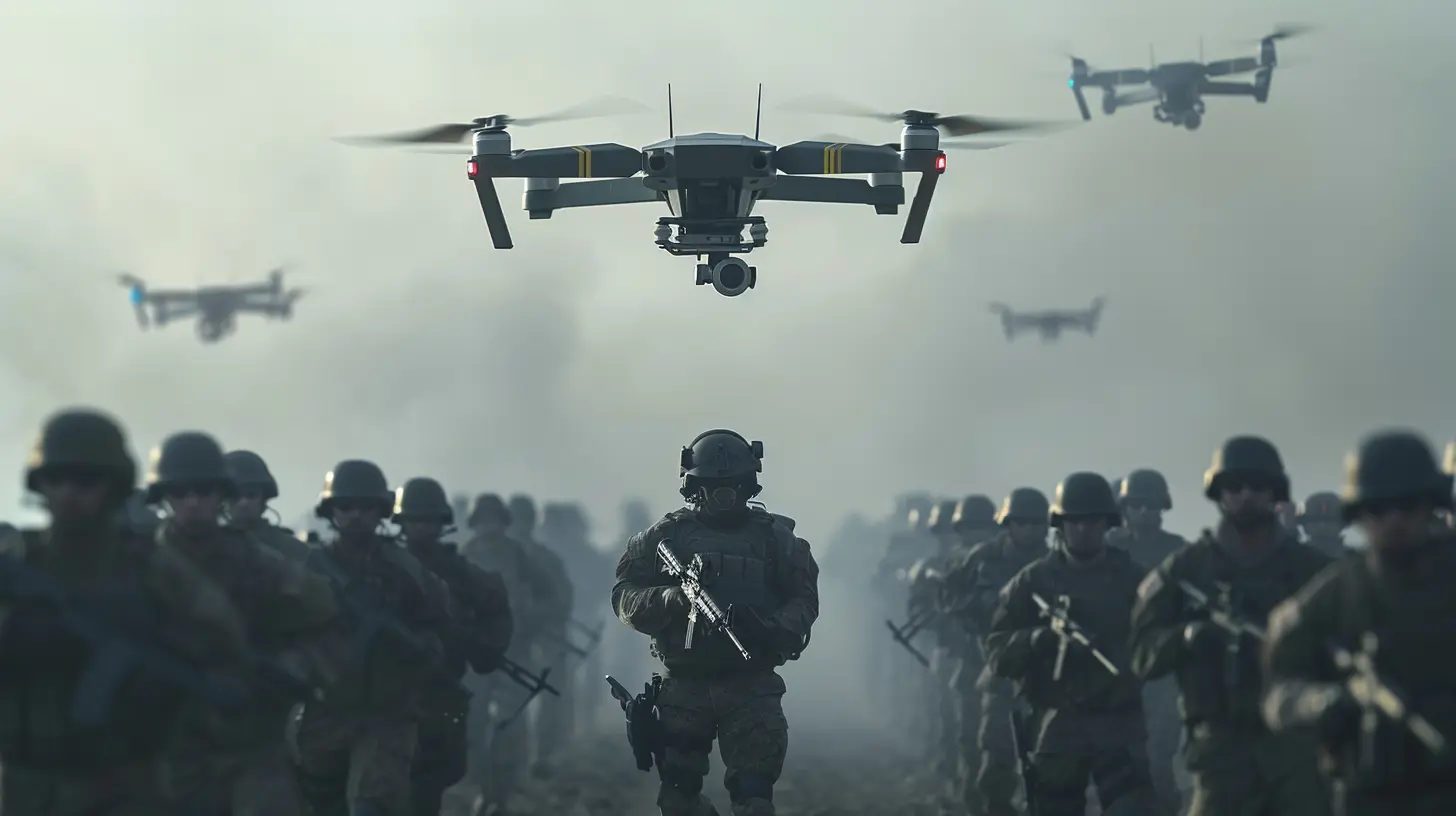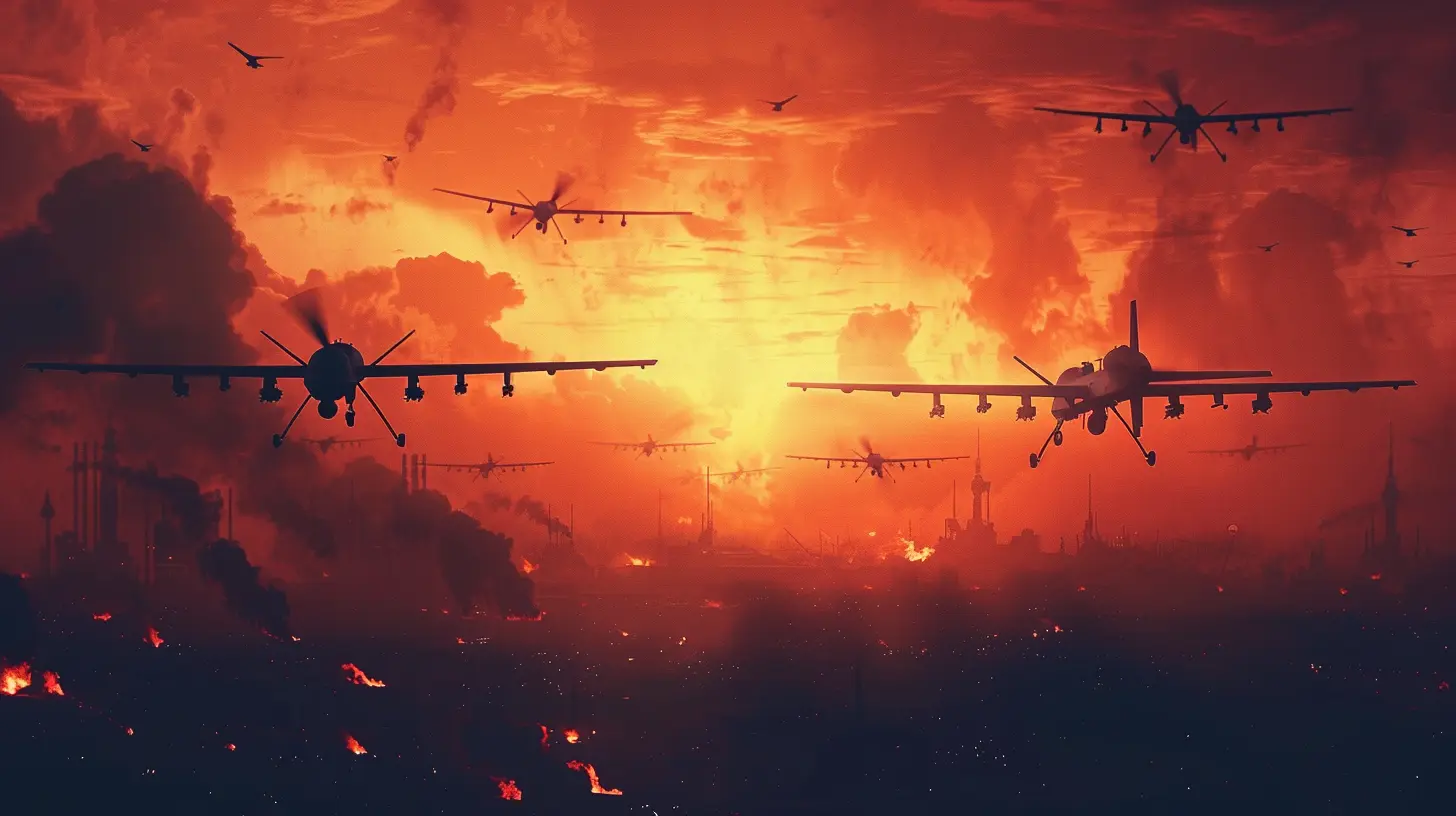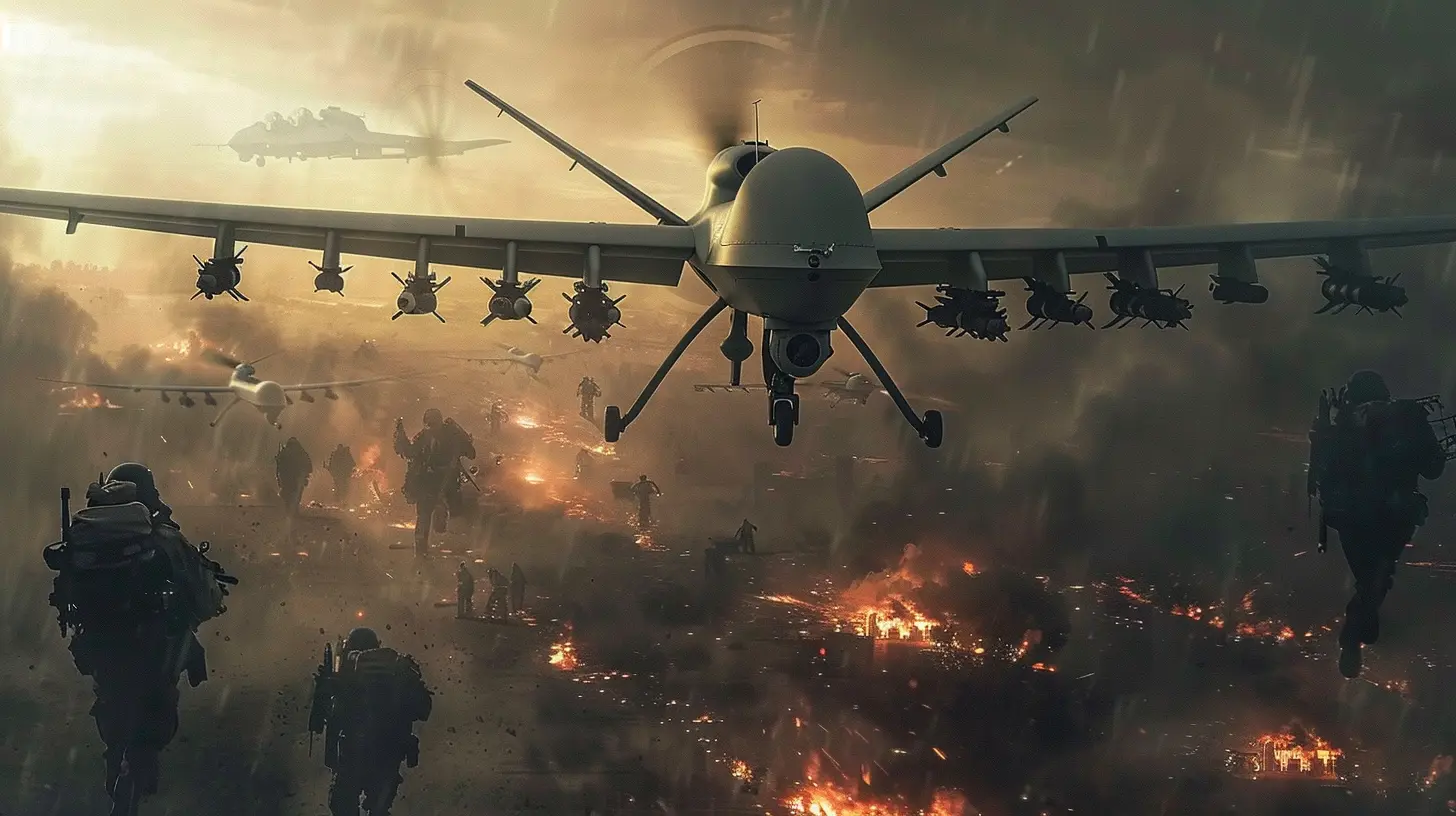The Evolution of Warfare: From Swords to Drones
8 June 2025
Warfare has been an unfortunate but defining part of human history. From the days of hand-to-hand combat with swords to today's sophisticated drone warfare, the way humans fight has changed dramatically. Every era has seen advancements in technology and tactics, shaping not only the battlefield but also the world around us.
So, how did we go from charging into battle with swords to remotely piloting drones from halfway across the world? Let’s take a journey through time and see how warfare has evolved over the centuries. 
The Age of Swords and Shields: The Dawn of War
Long before guns and missiles, battles were fought up close and personal. Warriors wielded swords, spears, and shields, relying on strength, skill, and strategy to win.The Role of Swords in Ancient Warfare
Think of the sword as the smartphone of its time—absolutely essential and widely used. Every civilization had its own version:- The Roman gladius, short and deadly in close combat.
- The Viking longsword, designed for powerful slashes.
- The Samurai katana, known for its razor-sharp precision.
But swords weren’t the only weapons of choice. Spears, bows, and arrows were also crucial, allowing soldiers to attack from a distance.
The Power of Armor and Shields
What’s the point of a weapon without defense? Warriors equipped themselves with steel and leather armor, while shields provided protection against enemy strikes. The stronger the armor, the better the chances of survival—until, of course, weapons advanced enough to punch through it.
The Rise of Gunpowder: A Game Changer in Combat
Fast forward to the Middle Ages, and suddenly, war takes a dramatic turn. Gunpowder, originally discovered in China, makes its way to Europe and changes everything.The Introduction of Firearms
Gone were the days of knights in shining armor. Firearms like muskets and cannons made heavily armored soldiers almost obsolete. Why? Because a single bullet could penetrate even the toughest armor, making swords far less effective in battle.Cannons and the End of Castles
For centuries, castles provided ultimate protection. But once cannons came into the picture, walls that stood for generations crumbled in a matter of hours. This meant warfare was no longer about brute strength—it was about technological superiority.
The Industrial Revolution: Mass Destruction on a New Scale
The 19th and early 20th centuries introduced mass production, making weapons deadlier and more efficient. Wars became longer, bloodier, and more destructive than ever before.World War I: The Horrors of Trench Warfare
World War I saw soldiers huddled in trenches, waiting for the next attack. Machine guns, artillery, and chemical weapons made battlefields more terrifying than ever.But perhaps the biggest change? Tanks and airplanes.
- Tanks: These armored beasts could roll through trenches, making them nearly unstoppable.
- Airplanes: At first, they were used for reconnaissance—but before long, they were dropping bombs and engaging in dogfights.
World War II: The Birth of Modern Warfare
If WWI introduced new technology, WWII perfected it. Weapons became faster, deadlier, and more precise. Innovations like radar, aircraft carriers, and automatic rifles changed the game.And then came the most devastating weapon of all—the atomic bomb. With the bombing of Hiroshima and Nagasaki, warfare entered a new and terrifying era where a single attack could wipe out entire cities. 
The Cold War and the Rise of High-Tech Warfare
After WWII, the world didn’t see another global war, but that didn’t mean countries weren’t preparing for one. The Cold War was essentially a race to develop bigger and better weapons.The Space Race and Missile Technology
While the US and the Soviet Union were competing to land on the moon, they were also developing ballistic missiles capable of delivering nuclear warheads across continents. Suddenly, wars didn’t need soldiers on the ground—just the press of a button.The Vietnam and Gulf Wars: Guerrilla Tactics and Precision Strikes
Traditional wars became less common, replaced by guerrilla warfare. In Vietnam, soldiers fought in jungles using ambushes and surprise attacks rather than head-on battles.Later, during the Gulf War, the world saw the power of precision-guided missiles. Instead of carpet bombing entire cities, nations could now take out specific targets with extreme accuracy.
The Digital Age: War Without Borders
The biggest shift in warfare has happened in the last few decades. War is no longer just physical—it's also digital.The Rise of Drones
Drones have changed warfare in ways we never imagined. Countries can now strike enemy targets without sending a single soldier into harm’s way. These unmanned aerial vehicles (UAVs) can:- Gather intelligence without being spotted.
- Perform precision strikes with minimal collateral damage.
- Stay airborne for hours, monitoring enemy movements.
Cyber Warfare: The Invisible Battlefield
Physical weapons are no longer the only threats. Countries now engage in cyber warfare, hacking enemy systems, stealing classified information, and even disabling power grids. In some ways, a cyber-attack can be just as dangerous as a missile strike.The Future of War: What's Next?
If history has taught us anything, it's that warfare never stays the same for long. So, what's next?Artificial Intelligence in Warfare
AI-driven weapons and autonomous drones could mean battles fought by machines rather than humans. Imagine AI-controlled fighter jets making split-second decisions without needing human pilots.Space Militarization
With satellites playing such a vital role in communication and surveillance, future wars might extend beyond Earth. Countries are already developing weapons that can disable enemy satellites, proving that space might be the next battlefield.Ethical Concerns and Global Consequences
With all these advancements, one big question remains: How do we control it? Warfare is becoming more high-tech, but at what cost? Nations will need to find a balance between security and ethical responsibility to avoid catastrophic consequences.Conclusion
From swords and shields to AI-driven warfare, the evolution of war reflects both human ingenuity and the darker side of our nature. The battlefield has transformed from gritty, face-to-face combat to high-tech, remote-controlled warfare.But at its core, war remains the same—a struggle for power, control, and survival. And as technology continues to evolve, one thing is certain: the nature of warfare will keep changing, and the challenges of tomorrow may be unlike anything we've seen before.
all images in this post were generated using AI tools
Category:
History LessonsAuthor:

Zoe McKay
Discussion
rate this article
3 comments
Rex McSweeney
Warfare's transformation reflects technological and ethical shifts.
June 20, 2025 at 12:49 PM

Zoe McKay
Absolutely! The evolution of warfare showcases how advancements in technology reshape strategies and raise new ethical dilemmas that society must confront.
Lydia McDermott
“From clashing swords to drone snacks, warfare really leveled up!”
June 9, 2025 at 3:54 AM

Zoe McKay
Absolutely! The evolution of warfare reflects our technological advancements and changing strategies, showcasing both the creativity and challenges of modern conflict.
Lacey Snyder
Ah yes, because nothing says “progress” quite like trading in a good old-fashioned sword fight for a drone hovering mysteriously above. Who needs honor when you've got Wi-Fi?
June 8, 2025 at 2:40 AM

Zoe McKay
Indeed, technology changes the face of warfare, but it also raises questions about honor and ethics in conflict.



